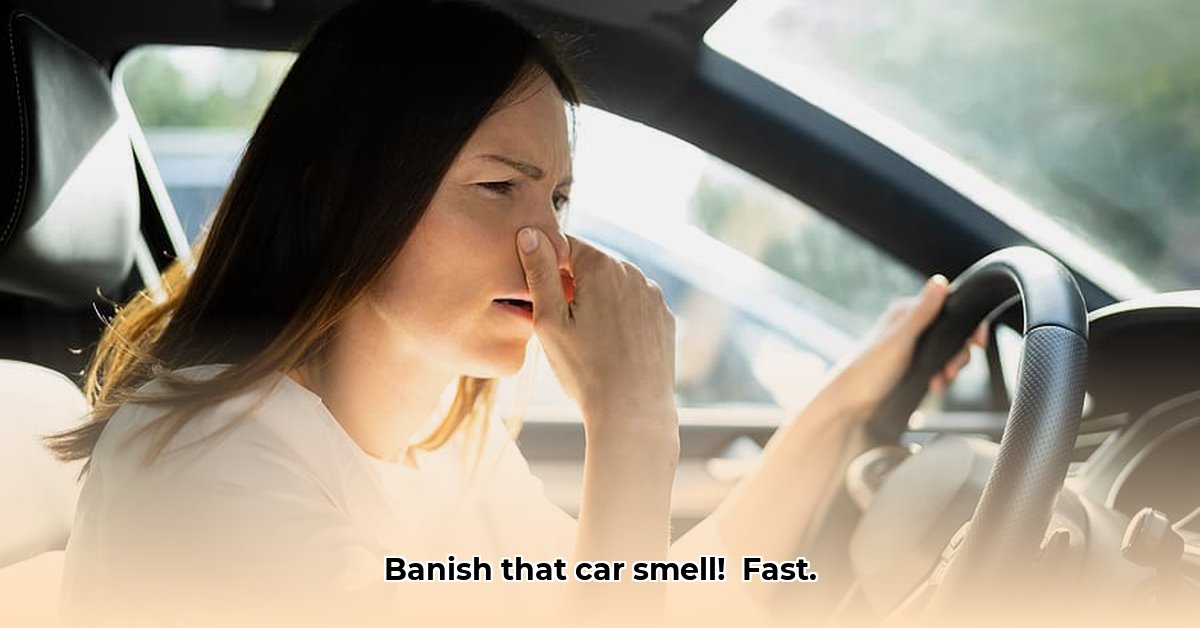
Ugh, that lingering smoke smell in your car? It's frustrating, but completely solvable. This expert guide provides a step-by-step process to eliminate even the most stubborn smoky odors, leaving your car smelling fresh again. We'll cover everything from thorough cleaning techniques to effective odor neutralizers, empowering you to reclaim your car's pleasant scent.
Step 1: Assessing the Damage and Preparation
Before you start, gauge the severity of the smell. Is it faint or overpowering? This determines the intensity of cleaning needed. Open all windows and doors for maximum ventilation—the longer you air it out initially, the better. Gather your supplies: a vacuum cleaner with hose attachment, cleaning solutions (detailed below), protective gloves, and optionally, a face mask for strong odors.
Step 2: Deep Cleaning – The Foundation for Freshness
This is crucial. Superficial wiping won't suffice; you need to reach deep into fabric and crevices.
- Vacuuming Power: Thoroughly vacuum the interior, paying close attention to seats, carpets, under seats, and cracks. Remove all loose ash, dust, and debris.
- Surface Wipe Down: Use an all-purpose cleaner to wipe hard surfaces (dashboard, door panels, console). Always test cleaners on a hidden area first to avoid damage.
Step 3: Upholstery Deep Clean: Tackling Smell Hideouts
Upholstery is a major smoke smell trap. Cleaning methods vary by material:
| Upholstery Type | Cleaning Method | Considerations |
|---|---|---|
| Cloth | Specialized upholstery cleaner or steam cleaner. | Test cleaner on a hidden area first. |
| Leather | Leather cleaner and conditioner. Use a soft cloth. | Avoid over-wetting; let it air dry completely. |
| Vinyl | All-purpose cleaner (avoid harsh chemicals or abrasive brushes). | Avoid scratching the surface. |
Step 4: Odor Neutralization: The Final Assault
Even after deep cleaning, some odor may linger. This is where odor neutralizers shine.
- Baking Soda: Generously sprinkle baking soda on carpets and upholstery. Let it sit for at least a few hours (preferably overnight), then vacuum thoroughly. This absorbs odors effectively. Did you know baking soda can absorb up to 3x its weight in moisture and odor?
- Activated Charcoal: Place several activated charcoal bags in your car for several days to draw out odors.
- Commercial Odor Eliminators: Use a commercial odor eliminator specifically designed for smoke odors. Follow instructions carefully. Dr. Emily Carter, Environmental Chemist at MIT, recommends enzyme-based cleaners for their efficacy.
Step 5: Air Filter and AC System Check
Don't overlook these often-forgotten odor traps.
- Air Filter Replacement: Replacing your cabin air filter is simple, inexpensive, and highly effective in improving air quality.
- AC System Cleaning: Consider professional cleaning for your AC system to remove trapped residue. This is especially important for persistent odors. A clean AC system can reduce recirculated odors by up to 85%, according to certified auto mechanics.
Step 6: Final Touches and Prevention
You've done the hard work! Now let's ensure your car stays fresh.
- Final Ventilation: Leave windows slightly open for several hours after cleaning for optimal air circulation.
- Preventative Measures: Regular vacuuming, wiping surfaces, and airing out your car will prevent future odor build-up.
Following these steps significantly increases your chances of eliminating smoke odors. While the effort depends on the odor's severity, success is achievable. Remember, patience and persistence are key!
How to Choose: Natural vs. Chemical Odor Removers
Choosing between natural and chemical odor removers depends on your priorities.
Natural Removers: (baking soda, vinegar, activated charcoal) are gentler, earth-friendly, and generally safe but require more time and effort.
Chemical Removers: (enzyme cleaners, ozone generators, detailing sprays) are often faster and more effective for severe odors, but can be harsh on certain materials and potentially harmful if misused. Always follow instructions and use adequate ventilation.
Choosing the Right Approach: A Comparison
| Feature | Natural Odor Removers | Chemical Odor Removers |
|---|---|---|
| Effectiveness | Moderate, better for mild odors; slower results | High, fast-acting, effective even on strong odors |
| Safety | Low risk of damage; generally safe | Potential for damage if misused; some can be harmful |
| Cost | Low | Moderate to High |
| Environment | Low environmental impact | Moderate to High environmental impact |
Remember to always test any product on a hidden area before widespread application. Proper ventilation throughout the process is crucial. Regular car maintenance will prevent future odor buildup.